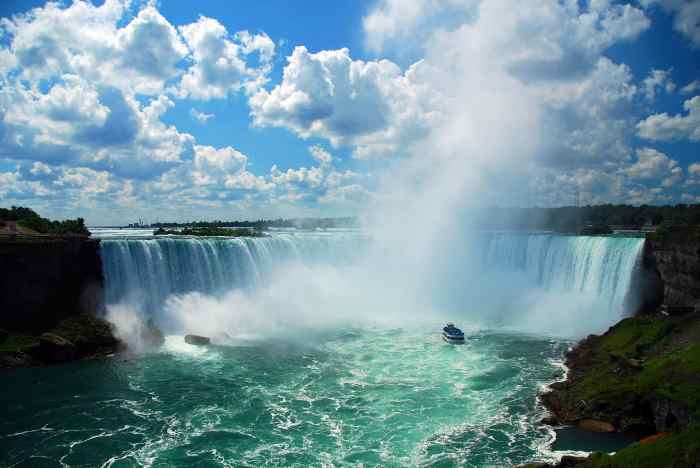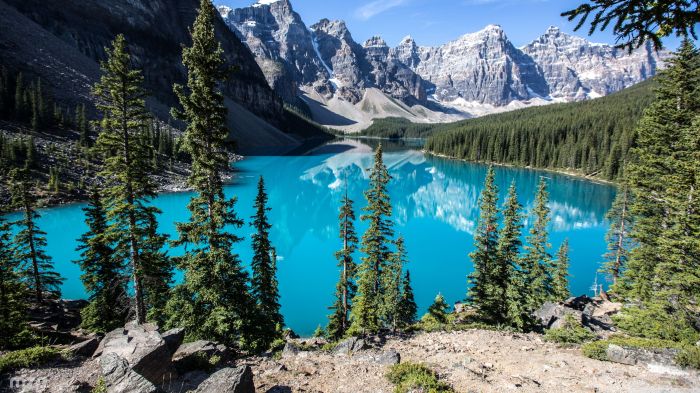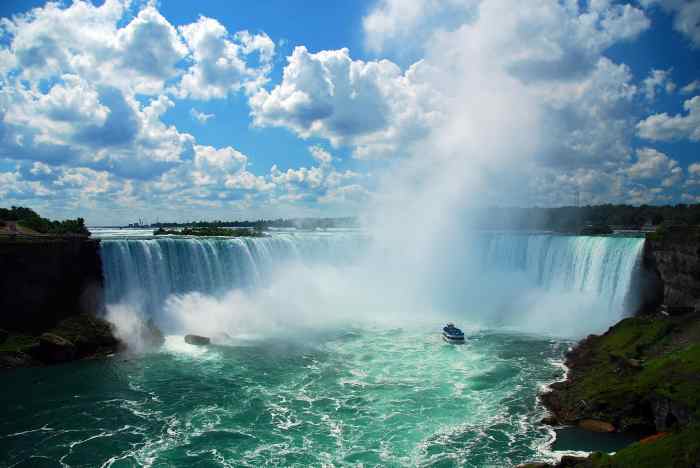Nova Scotia road trip itinerary: embarking on a journey through breathtaking landscapes, rich history, and delectable cuisine. This guide will unravel the best time to visit, the diverse experiences available, and a detailed plan for your unforgettable Nova Scotia road trip. From scenic coastal drives to exploring charming towns, this itinerary will inspire your adventure.
We’ll cover everything from essential planning steps, like choosing your timeframe and researching accommodations, to must-see destinations, like iconic landmarks and local culinary delights. Discover the perfect balance between relaxation and exploration, and create an unforgettable road trip experience.
Introduction to Nova Scotia Road Trip
Nova Scotia, a province nestled on the eastern coast of Canada, offers a captivating blend of natural beauty, rich history, and vibrant culture, making it an ideal destination for a memorable road trip. Its winding coastal roads, charming towns, and diverse landscapes provide endless opportunities for exploration, from rugged cliffs to serene beaches. The province’s unique blend of maritime charm and wilderness appeal guarantees a journey that caters to various interests and preferences.The best time to experience Nova Scotia’s road trip adventures is during the shoulder seasons, typically spring (May-June) and fall (September-October).
These periods offer pleasant weather, fewer crowds compared to peak summer, and vibrant autumn foliage, enhancing the scenic beauty of the province. Summer months, while bustling, can be hot and humid, potentially impacting outdoor activities. Winter, while offering unique experiences like snowmobiling, might not be ideal for those seeking a relaxed driving adventure.Nova Scotia caters to diverse road trip experiences.
Whether you seek scenic routes along the coastline, historical explorations of charming villages, or adventurous hikes through the mountains, the province has something to offer. For instance, a scenic route might follow the Cabot Trail, while a historical adventure could focus on exploring the historic sites of Lunenburg. An adventurous route could incorporate hiking in Cape Breton Highlands National Park.
Ideal Times for a Nova Scotia Road Trip
The shoulder seasons, spring (May-June) and fall (September-October), are optimal for road trips in Nova Scotia. These times offer pleasant weather, fewer crowds, and the spectacular beauty of spring blossoms or vibrant fall foliage. Summer, while popular, can experience higher temperatures and humidity, potentially impacting outdoor activities. Winter, while presenting unique attractions like snowmobiling, might not be ideal for a relaxed driving experience due to road conditions and weather.
Major Regions for Nova Scotia Road Trips
Nova Scotia is divided into distinct regions, each with its own character and attractions, perfect for tailored road trip experiences.
Planning a Nova Scotia road trip? It’s going to be amazing! But before you hit the road, consider a quick detour to explore some of the incredible things to do in Toronto. things to do in toronto offers a fantastic range of activities, from museums to vibrant neighbourhoods. Once you’ve had your fill of urban adventures, you can confidently head back to your Nova Scotia road trip itinerary and enjoy the natural beauty of the province!
| Region | Description | Highlights | Road Trip Focus |
|---|---|---|---|
| Cape Breton Island | Known for its rugged beauty, mountains, and rich Gaelic heritage. | Cabot Trail, Cape Breton Highlands National Park, charming fishing villages | Scenic, adventurous, cultural |
| Halifax Region | The province’s capital, a vibrant hub with a mix of history and modern attractions. | Historic Halifax Citadel, waterfront attractions, museums | Historical, cultural, city exploration |
| South Shore | Coastal region known for its charming villages, beaches, and lobster fishing. | Peggy’s Cove, Lunenburg (UNESCO World Heritage Site), beautiful beaches | Scenic, historical, coastal |
| North Shore | Characterized by rugged coastline, lighthouses, and historic fishing villages. | Lighthouses, scenic drives, historic fishing villages | Scenic, historical, coastal |
Planning the Nova Scotia Road Trip Itinerary
Planning a road trip to Nova Scotia is an exciting process, filled with anticipation for breathtaking landscapes and charming towns. Careful planning ensures a smooth and enjoyable journey, maximizing your time and minimizing stress. This section dives into the key steps for creating a memorable Nova Scotia road trip itinerary.
Choosing a Timeframe
The best time to visit Nova Scotia depends on your preferences. Summer offers warm weather, ideal for outdoor activities, but can be busier. Spring and fall provide pleasant temperatures and fewer crowds, making them great options for a more relaxed experience. Consider the type of activities you’d like to engage in, and the weather conditions that are most comfortable for you.
Researching Accommodations
Nova Scotia offers a variety of accommodation options, from budget-friendly campsites to luxurious hotels and cozy B&Bs. Researching and booking in advance is crucial, especially during peak season. This allows you to compare prices, amenities, and locations to find the perfect fit for your needs and budget.
Essential Packing Items
Packing efficiently is key to a successful road trip. To ensure you have everything you need, categorize your items for easy reference. This will help you to avoid forgetting essential items and streamline the packing process.
- Clothing: Pack layers, as Nova Scotia’s weather can be unpredictable. Include comfortable walking shoes, waterproof outerwear, and clothing suitable for the anticipated activities.
- Essentials: Don’t forget toiletries, medications, a first-aid kit, and any necessary documents like passports or driver’s licenses. Consider packing a portable charger for your electronic devices.
- Navigation: A GPS device or a reliable map app is essential for navigating the roads. Download offline maps for areas with limited or no cell service.
- Entertainment: Pack books, magazines, or electronic devices for downtime and entertainment during travel or breaks.
- Food: Consider packing snacks and drinks for the road, especially for longer journeys, or when visiting areas with limited dining options. Also, include any dietary restrictions you or your traveling companions may have.
Accommodation Options
Nova Scotia offers a wide array of accommodations to suit various budgets and preferences. The choice depends on your travel style and the amount you are willing to spend.
- Hotels: Provide a comfortable and convenient stay with amenities like restaurants and swimming pools. They are generally a good choice for travelers who prefer a structured and familiar environment.
- B&Bs: Offer a more personal and unique experience, often located in charming historic homes. Guests can interact with the hosts, learning about the local area. They are generally more expensive than hotels, but the experience is often worth it.
- Campgrounds: Provide a more budget-friendly option for travelers who enjoy a connection with nature. Campgrounds often offer a sense of freedom and independence, but require more self-sufficiency.
Popular Routes and Suggested Stops
Nova Scotia offers a network of scenic routes to explore. Planning your route with stops in mind ensures a smooth and enjoyable trip. This includes considering potential delays, or time spent at specific locations, and allowing for sufficient time to see and enjoy each destination.
Transportation Options
| Transportation | Pros | Cons | Suitability |
|---|---|---|---|
| Car | Flexibility, comfort, space for luggage | Parking challenges in some areas, potential for traffic | Best for families, groups, and those who want to explore at their own pace. |
| Motorcycle | Excellent for exploring winding roads and scenic views, nimble maneuverability | Less comfortable for longer trips, limited luggage space, weather dependent | Ideal for experienced riders, and those who enjoy a more adventurous experience. |
| Bicycle | Environmentally friendly, good for exploring on a smaller scale | Time-consuming, limited range, weather dependent | Best for shorter trips and those focused on specific regions, or who prefer a leisurely pace. |
| Public Transportation | Cost-effective, convenient for some areas | Limited routes, inflexible schedules, can be slow and less accessible to remote areas | Suitable for budget-conscious travelers, or those visiting only specific locations within major cities. |
Must-See Destinations in Nova Scotia
Nova Scotia, a land of breathtaking coastlines, charming villages, and rich history, offers a diverse range of experiences for every traveler. This province is a true gem, waiting to be explored. From the rugged beauty of Cape Breton Highlands to the vibrant energy of Halifax, there’s something for everyone. This section delves into five iconic destinations, highlighting their unique allure and suggesting ways to make the most of your visit.Discovering these destinations will not only enhance your Nova Scotia road trip but also provide a deeper understanding of the province’s captivating essence.
Each destination offers a unique blend of natural wonders, cultural heritage, and vibrant local experiences.
Halifax: A City of History and Charm
Halifax, Nova Scotia’s capital, is a vibrant city with a rich history. It’s a bustling hub for maritime activity and offers a captivating blend of modern amenities and historical sites. Its strategic location has shaped its identity, influencing its architecture and cultural fabric.
| Key Attractions | Activities | Nearby Amenities | Day Trip Ideas |
|---|---|---|---|
| Citadel Hill, Maritime Museum of the Atlantic, Public Gardens | Guided tours, historical walks, exploring the waterfront, shopping | Restaurants, cafes, hotels, public transportation | Explore the historic Citadel, visit the Maritime Museum, enjoy a picnic in the Public Gardens, and savor a delicious seafood dinner at a waterfront restaurant. |
A day in Halifax could involve a morning exploring the Citadel, a fascinating historical landmark. Afterward, a visit to the Maritime Museum of the Atlantic would provide insight into the region’s maritime history. A stroll through the beautiful Public Gardens offers a serene escape from the city’s energy.
Peggy’s Cove: A Picturesque Fishing Village
Peggy’s Cove, nestled on the Atlantic coast, is a picturesque fishing village famed for its iconic lighthouse and stunning sea views. The village’s charm lies in its close connection to the sea, a tradition that has shaped its identity for generations.
| Key Attractions | Activities | Nearby Amenities | Day Trip Ideas |
|---|---|---|---|
| Peggy’s Cove Lighthouse, scenic coastal walks, fishing boats | Whale watching tours (seasonal), scenic drives, taking photos, watching the fishermen | Cafes, restaurants, gift shops | Arrive early to experience the vibrant atmosphere, watch the fishing boats, and admire the iconic lighthouse. Enjoy a fresh seafood lunch at a local restaurant. |
A day trip to Peggy’s Cove should ideally include a visit to the lighthouse, a stroll along the rocky coastline, and maybe even a chance to spot some whales (seasonal). Enjoy a delicious seafood lunch at a local restaurant and capture the breathtaking views.
Cape Breton Highlands National Park: A Mountainous Paradise
Cape Breton Highlands National Park is a mountainous paradise boasting breathtaking landscapes, dramatic coastlines, and rich geological formations. The park’s beauty is a testament to the powerful forces of nature.
| Key Attractions | Activities | Nearby Amenities | Day Trip Ideas |
|---|---|---|---|
| Cabot Trail, scenic overlooks, hiking trails, Gros Morne National Park | Hiking, scenic drives, exploring the coastline, camping, photography | Camping grounds, visitor centers, restaurants, accommodations | Explore the scenic Cabot Trail, stopping at viewpoints for stunning vistas. Hike along one of the many trails, taking in the park’s natural beauty. |
Spend a day exploring the Cabot Trail, stopping at various scenic overlooks. Hike along a marked trail, immersing yourself in the park’s stunning landscapes.
Lunenburg: A Historic Harbour Town
Lunenburg, a UNESCO World Heritage site, is a charming historic harbour town with a rich maritime past. Its well-preserved architecture, a testament to its colonial history, offers a glimpse into a bygone era.
Planning a Nova Scotia road trip? It’s a fantastic adventure, but maybe you’re also eyeing some spring break fun! If you’re looking for incredible deals on flights to Miami, Tulum, or Orlando, check out the latest JetBlue spring break deals here. Once you’ve got your flights sorted, you can focus on your Nova Scotia road trip itinerary, planning the best stops along the way.
| Key Attractions | Activities | Nearby Amenities | Day Trip Ideas |
|---|---|---|---|
| Historic buildings, harbour tours, shops, restaurants | Walking tours, exploring the shops, enjoying harbour views, visiting the museums | Restaurants, cafes, accommodations, historical sites | Take a guided walking tour to discover the town’s history, enjoy a leisurely stroll through the shops, and indulge in a delicious meal at one of the waterfront restaurants. |
A day in Lunenburg could involve a walking tour to uncover the town’s rich history, exploring the harbour, and savoring a meal at a local restaurant.
Prince Edward Island National Park: A Coastal Gem
Prince Edward Island National Park is a coastal gem featuring breathtaking beaches, serene landscapes, and diverse wildlife. The park’s beauty stems from its pristine natural environment, making it a haven for nature enthusiasts.
| Key Attractions | Activities | Nearby Amenities | Day Trip Ideas |
|---|---|---|---|
| Beaches, hiking trails, wildlife viewing, camping | Hiking, kayaking, birdwatching, camping, enjoying the beaches | Camping grounds, visitor centers, restaurants, accommodations | Explore the scenic beaches, take a leisurely walk along the trails, and keep an eye out for local wildlife. |
Spend a day enjoying the park’s pristine beaches, exploring its hiking trails, and keeping an eye out for the diverse wildlife.
Culinary Experiences in Nova Scotia
Nova Scotia’s culinary scene is a vibrant tapestry woven from its rich maritime history and diverse landscapes. From fresh seafood caught daily to hearty farm-to-table dishes, the province offers a unique and delicious journey for the food enthusiast. Exploring the culinary landscape reveals a depth of flavour that reflects the region’s distinct character, offering a delightful counterpoint to the stunning scenery.Regional culinary differences reflect the diverse geography and agricultural practices of Nova Scotia.
Coastal areas, for instance, emphasize seafood, while inland regions showcase the bounty of local farms. The unique flavors and traditions are as varied as the landscapes themselves.
Must-Try Nova Scotian Dishes
Nova Scotia’s culinary traditions are rooted in the province’s rich history. The abundance of fresh seafood, cultivated by generations of fishermen and farmers, is a cornerstone of the local cuisine. This abundance allows for diverse culinary expressions.
- Seafood Chowder: A hearty and comforting soup, often featuring clams, mussels, or lobster. Variations exist throughout the province, each with its own unique blend of spices and textures.
- Nova Scotia Lobster Rolls: Freshly caught lobster, succulent and sweet, is piled high on a toasted bun, often accompanied by a tangy tartar sauce.
- Mussels: A classic maritime dish, steamed or pan-fried, mussels are often served with a white wine sauce and fresh herbs.
- Poutine: A Canadian staple, with Nova Scotian variations often featuring locally sourced cheese curds and smoked meat.
- Farm-to-Table Delights: Many restaurants highlight the region’s local produce. Look for dishes featuring seasonal fruits and vegetables, showcasing the freshness and flavour of Nova Scotia’s bounty.
Local Restaurants and Food Markets
Discovering the best restaurants and markets is essential to experiencing Nova Scotia’s culinary offerings. A well-curated list of restaurants and markets will provide a taste of the province’s diversity.
- The Lobster Pot (various locations): Renowned for its fresh lobster rolls and seafood platters. A must-try for a taste of authentic Nova Scotian cuisine.
- Halifax Public Market: A bustling market brimming with local produce, seafood, and artisan goods. This is a fantastic spot to experience local flavours and meet farmers.
- Restaurant names in specific regions (e.g., Sydney, Lunenburg): Consult local guides and tourist information centres for recommendations specific to your area. This ensures a tailored experience based on your interests and location.
Regional Culinary Differences
The varying landscapes of Nova Scotia give rise to distinct culinary traditions.
| Region | Key Culinary Characteristics |
|---|---|
| Coastal | Seafood is prominent, with fresh catches prepared in diverse ways. Expect dishes like lobster rolls, chowder, and grilled fish. |
| Inland | Farm-to-table cuisine is common, with seasonal vegetables and fruits playing a key role. Expect dishes highlighting local produce, perhaps paired with game meats. |
| Cape Breton | A blend of coastal and inland influences, offering a rich tapestry of flavors. Expect dishes featuring both fresh seafood and local game. |
Sample Culinary Itinerary
This itinerary focuses on experiencing Nova Scotia’s culinary scene, highlighting restaurants and local markets.
- Day 1: Halifax Exploration Begin your journey in Halifax, exploring the Halifax Public Market, savoring fresh seafood at a local restaurant.
- Day 2: Lunenburg Head to Lunenburg, a charming harbour town, enjoying a fresh lobster feast and visiting local artisan shops. The town’s culinary scene is heavily focused on fresh seafood.
- Day 3: Annapolis Valley Immerse yourself in the Annapolis Valley, known for its farm-to-table restaurants and local produce. Explore local farms and sample seasonal produce.
Local Ingredients and Origins
Understanding the origin of ingredients adds depth to the dining experience.
Planning a Nova Scotia road trip? It’s a fantastic way to explore the stunning scenery and charming towns. To make the most of your time, incorporating some digital nomad remote work tips can be key. For example, finding reliable Wi-Fi hotspots along the route and strategically scheduling work breaks around scenic stops will enhance the experience. Remember, this trip is about balancing work and exploration.
You can easily manage both by checking out digital nomad remote work tips for useful strategies, allowing you to stay connected while fully enjoying your Nova Scotia adventure. Ultimately, a well-planned road trip combines the best of both worlds.
- Lobster: Caught from the Atlantic waters, showcasing the province’s rich maritime heritage.
- Potatoes: Grown in the fertile Annapolis Valley, a key ingredient in many dishes.
- Apples: A product of Nova Scotia’s orchards, a key ingredient in pies, jams, and cider.
Unique Flavors and Traditions
Nova Scotia’s culinary scene reflects the province’s history and culture.
- Maritime Influences: A strong presence of seafood, influenced by the province’s coastal nature. The flavours of the sea are prevalent throughout the culinary landscape.
- Farm-to-Table Emphasis: A growing focus on locally sourced ingredients, showcasing the bounty of Nova Scotia’s farms. This focus is becoming increasingly important.
- Regional Variations: Coastal, inland, and Cape Breton regions each possess unique culinary traditions, reflecting the province’s diverse geography.
Activities and Experiences During the Road Trip

Embarking on a Nova Scotia road trip is more than just sightseeing; it’s about immersing yourself in the province’s vibrant spirit and breathtaking landscapes. This section delves into the exciting activities awaiting you, from thrilling outdoor adventures to exploring rich history and culture. Plan your itinerary based on your interests, whether it’s hiking through lush forests, kayaking through serene waters, or learning about the province’s fascinating past.From exploring ancient settlements to paddling along scenic coastlines, Nova Scotia offers a diverse range of activities.
Tailor your experiences to match your preferred pace and energy levels. This detailed guide will equip you with the knowledge to craft a memorable and personalized road trip, filled with experiences unique to Nova Scotia.
Hiking and Nature Trails
Nova Scotia boasts a stunning array of hiking trails, catering to varying experience levels. From easy strolls along the coast to challenging climbs through mountain ranges, you’re sure to find a trail that suits your abilities. The Cabot Trail, a renowned scenic route, offers breathtaking vistas and opportunities for exploration. The trails around Cape Breton Highlands National Park are particularly popular for their varied terrain and panoramic views.
Consider researching trails in advance, noting their difficulty levels and estimated times.
Kayaking and Paddleboarding
Explore Nova Scotia’s picturesque coastline from a unique perspective with kayaking or paddleboarding. Numerous sheltered bays and inlets provide ideal conditions for leisurely paddles. The coastline around the Annapolis Valley offers serene waterways for exploring. Many outfitters provide rentals and guided tours, ensuring a safe and enjoyable experience for all skill levels. Consider bringing a waterproof backpack to carry essentials while on the water.
Whale Watching and Wildlife Viewing
Witness the majestic beauty of marine life with a whale watching tour. Nova Scotia’s waters are home to various species, including humpback whales, minke whales, and dolphins. Several tour operators offer excursions from different ports, allowing you to choose a trip that best fits your schedule. Look for reputable operators that prioritize responsible wildlife viewing practices. Remember to keep a respectful distance from the animals.
Exploring Historical Sites and Museums
Delve into Nova Scotia’s rich history by visiting historical sites and museums. The province has a fascinating past, from its early settlements to its role in significant historical events. The Fortress of Louisbourg National Historic Site offers a glimpse into the province’s military and colonial history. Museums throughout the province provide insightful exhibits on Nova Scotia’s art, culture, and heritage.
Plan your visits in advance, especially during peak seasons.
Outdoor Activities Comparison Table
| Activity | Difficulty Level | Recommended Gear | Scenic Location Examples |
|---|---|---|---|
| Hiking (Cabot Trail) | Moderate to Strenuous | Hiking boots, water bottle, sunscreen, first-aid kit | Cape Breton Highlands National Park |
| Kayaking (Annapolis Valley) | Easy to Moderate | Life vest, paddle, waterproof bag, sunscreen | Annapolis Royal |
| Whale Watching (Canso) | Easy | Comfortable clothing, hat, sunglasses | Canso |
| Historical Site Tour (Halifax) | Easy | Comfortable walking shoes | Halifax Citadel |
Local Festivals and Events
Nova Scotia hosts a variety of festivals and events throughout the year, providing unique cultural experiences. Research local calendars for events occurring during your planned trip. These events often showcase local talent, food, and traditions. Many festivals offer a chance to interact with the local community.
Budget and Logistics for the Road Trip
Planning a Nova Scotia road trip involves careful consideration of your budget and logistics. This section delves into the financial aspects of the journey, providing a sample budget, cost breakdown, and tips for saving money without compromising the experience. It also Artikels potential transportation costs based on vehicle type and distance.
Sample Budget for a 10-Day Nova Scotia Road Trip, Nova scotia road trip itinerary
A comprehensive budget is essential for a smooth and enjoyable road trip. This sample budget, designed for a 10-day trip, provides a realistic estimate, encompassing accommodation, food, activities, and transportation. Remember that these figures are estimations and can vary based on your specific choices and travel style.
- Accommodation (estimated): $1,000. This figure accounts for a mix of budget-friendly options like hostels or vacation rentals, and potentially a few nights in more comfortable hotels or bed and breakfasts, depending on your preferences. Consider booking accommodations in advance, especially during peak season, to secure the best rates and availability.
- Food (estimated): $800. This includes meals, snacks, and drinks. Expect to spend more on dining out at restaurants, but you can save money by preparing some meals in your accommodation or utilizing picnic opportunities. Local farmers markets and grocery stores are great options for affordable and fresh ingredients.
- Activities (estimated): $600. This covers entry fees for attractions, tours, and other activities. Consider free activities like hiking, exploring beaches, and visiting parks to minimize costs. Look for deals and discounts on activities, and consider purchasing a park pass if applicable.
- Transportation (estimated): $400. This covers fuel, tolls, and potential parking fees. Calculate your expected mileage and fuel costs based on your vehicle’s fuel efficiency. Account for potential parking fees at attractions or in popular areas.
Detailed Breakdown of Potential Costs
A detailed breakdown of costs provides a clearer picture of the financial commitment involved. This breakdown highlights the various expenses and allows for better budgeting and planning.
- Gas/Fuel Costs: Fuel prices fluctuate, so research current rates before your trip. Factor in the distance you plan to travel, your vehicle’s fuel efficiency, and potential toll fees.
- Accommodation Costs: Accommodation costs depend on the type of lodging you choose (hostels, hotels, vacation rentals, etc.). Consider booking in advance, especially during peak season, to secure better rates and availability. Look for discounts or deals on accommodation platforms.
- Food Costs: Food costs vary based on your dining choices. Eating at restaurants can be expensive. Plan for picnic lunches or pack snacks to reduce costs. Utilize local grocery stores or farmers markets for fresh, affordable ingredients.
- Activities and Attractions: Entrance fees to attractions, tours, and other activities can vary significantly. Plan your activities in advance and consider free activities to lower the cost.
Tips for Maximizing Your Budget
Maximizing your budget during a road trip requires careful planning and execution. These tips help you make the most of your money while enjoying the journey.
- Plan your meals in advance. Planning your meals ahead of time helps you avoid impulse purchases and stick to your budget. Utilize free activities to lower your expenses. Look for deals on activities and attractions.
- Look for free or low-cost activities. Nova Scotia offers numerous free or low-cost activities, such as hiking, exploring beaches, and visiting parks. Research these options to maximize your savings.
- Book accommodations in advance. Booking accommodations in advance, especially during peak season, can help you secure better rates and availability.
- Pack your own snacks and drinks. Packing your own snacks and drinks can significantly reduce food costs during your trip.
Cost-Saving Strategies for the Nova Scotia Road Trip
Cost-saving strategies are essential for ensuring a memorable road trip without breaking the bank. These strategies can help you reduce expenses and stretch your budget further.
- Consider a budget-friendly vehicle. If possible, renting a smaller, more fuel-efficient vehicle can save on gas costs. A smaller car will also be more maneuverable in certain areas.
- Utilize camping or budget-friendly accommodation options. Camping or staying in budget-friendly accommodations can significantly reduce your lodging costs.
- Take advantage of free activities. Many parks, beaches, and trails are free to access. Explore these options to save money on activities.
- Cook some of your meals. Cooking some of your meals in your accommodation can help you save money on dining out.
Transportation Costs
Transportation costs vary significantly depending on the vehicle type and the distance covered. This table provides an example of potential costs.
| Vehicle Type | Distance (miles) | Estimated Fuel Cost | Potential Toll/Parking Fees |
|---|---|---|---|
| Compact Car | 500 | $50 – $75 | $10 – $20 |
| SUV | 500 | $75 – $100 | $15 – $25 |
| Large Truck | 500 | $100 – $150 | $20 – $30 |
Sample Itinerary Options: Nova Scotia Road Trip Itinerary
Planning a Nova Scotia road trip is about choosing the perfect blend of adventure and relaxation. This section presents three distinct itinerary options, each tailored to different timeframes and interests. Adjusting these examples to your specific preferences is easy, allowing you to craft a personalized journey through the stunning landscapes and vibrant culture of Nova Scotia.
Itinerary 1: Coastal Charm (7 Days)
This itinerary focuses on the breathtaking coastline, exploring charming seaside towns and indulging in fresh seafood.
- Day 1: Arrive in Halifax, explore the waterfront, and check into your accommodation. Enjoy a delicious seafood dinner at a local restaurant.
- Day 2: Drive along the scenic Cabot Trail, stopping at picturesque coastal villages like Peggy’s Cove and Cheticamp. Consider a whale watching tour.
- Day 3: Continue along the Cabot Trail, enjoying the dramatic views and exploring the local shops and galleries. Enjoy a picnic lunch by the ocean.
- Day 4: Travel to the Annapolis Valley, known for its rolling hills and fruit farms. Visit a local orchard for a taste of the region’s bounty.
- Day 5: Explore the charming towns of the Annapolis Valley. Consider a wine tasting at one of the many vineyards.
- Day 6: Return to Halifax for a final evening in the city, exploring any remaining attractions or enjoying a final seafood dinner.
- Day 7: Depart from Halifax.
Itinerary 2: History and Culture (5 Days)
This itinerary highlights Nova Scotia’s rich history and cultural heritage, perfect for those interested in museums, historical sites, and charming towns.
- Day 1: Arrive in Halifax, check into your accommodation, and explore the Halifax Citadel National Historic Site, learning about the city’s past.
- Day 2: Travel to Lunenburg, a UNESCO World Heritage Site, known for its historic buildings and harbour. Explore the town and have lunch at a local restaurant.
- Day 3: Visit the Fortress of Louisbourg National Historic Site, immersing yourself in the history of this historic fortress.
- Day 4: Return to Halifax or explore other museums and attractions in the region.
- Day 5: Depart from Halifax.
Itinerary 3: Outdoor Adventure (10 Days)
This itinerary focuses on outdoor activities and exploring Nova Scotia’s natural beauty.
- Day 1: Arrive in Cape Breton, check into your accommodation, and explore the area.
- Day 2-4: Hike the scenic trails of Cape Breton Highlands National Park, enjoying the breathtaking views. Consider kayaking or canoeing.
- Day 5: Explore the charming town of Baddeck, visiting the Cabot Trail and exploring the area’s rich heritage.
- Day 6-8: Continue your exploration of the Cape Breton Highlands National Park, visiting different sections of the park, enjoying hiking and nature walks.
- Day 9: Visit the Fortress of Louisbourg National Historic Site.
- Day 10: Depart from Sydney or another airport.
Itinerary Comparison
| Itinerary | Duration | Highlights | Approximate Cost |
|---|---|---|---|
| Coastal Charm (7 Days) | 7 Days | Coastal drives, seaside towns, whale watching, Annapolis Valley | $1500 – $2500 |
| History & Culture (5 Days) | 5 Days | Halifax Citadel, Lunenburg, Fortress of Louisbourg, museums | $1200 – $2000 |
| Outdoor Adventure (10 Days) | 10 Days | Hiking, Cape Breton Highlands National Park, kayaking, canoeing | $1800 – $3000 |
Accommodation Options
These are just a few examples, and many other options are available, depending on your preferences and budget.
- Coastal Charm: Consider cozy bed and breakfasts, charming seaside inns, or hotels in Halifax and other coastal towns.
- History & Culture: Choose from historic bed and breakfasts, boutique hotels in Halifax and Lunenburg, or charming guesthouses.
- Outdoor Adventure: Look for cabins in the Cape Breton Highlands, campsites for budget-conscious travellers, or lodges for a more luxurious experience.
Last Recap

This comprehensive Nova Scotia road trip itinerary provides a roadmap for your adventure. It details the planning process, highlights must-see destinations, and offers diverse activity options. Whether you’re seeking a scenic route, historical immersion, or adventurous pursuits, this guide equips you to craft a personalized road trip. Prepare for unforgettable memories in the beautiful province of Nova Scotia.







